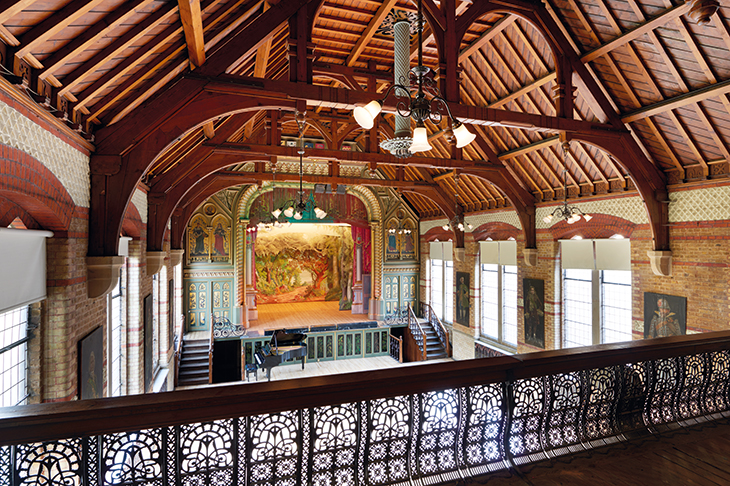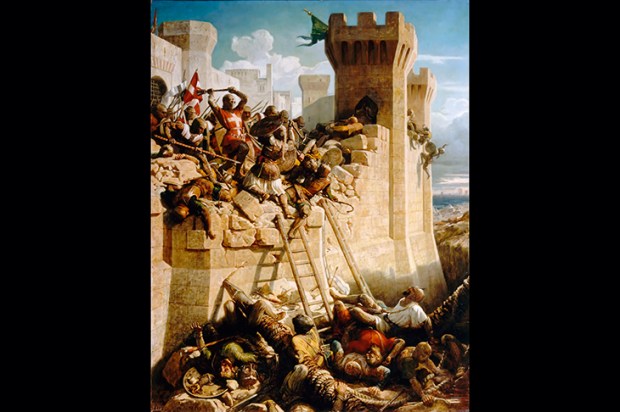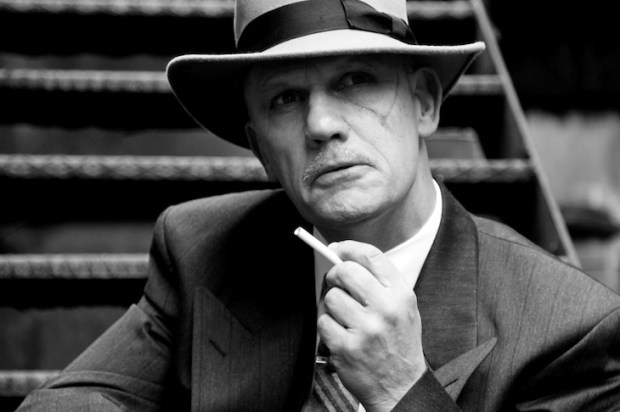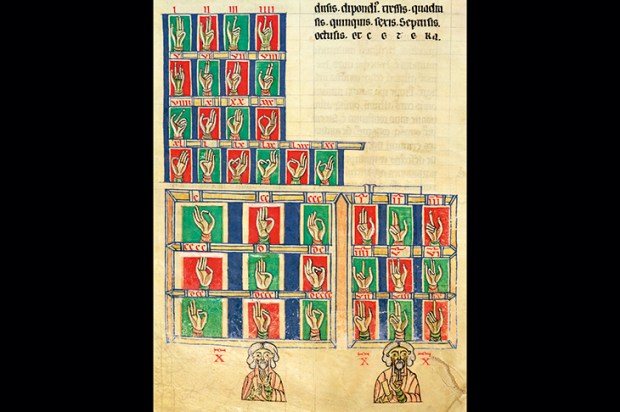Theatre buildings are seriously interesting – as I ought to have appreciated sooner in the course of 25 years writing about theatre and opera. This coffee-table whopper, weighing in at just under a kilo, dazzles: Michael Coveney’s text is even better than Peter Dazeley’s remarkable photographs. And in a luminous foreword, Mark Rylance sets out the not-so-obvious difference between theatre and cinema: ‘In a theatre you need to hear the truth. In a cinema you need to see it.’ Most of the theatre audience can’t see the actor’s eyes, and have to rely on hearing emotion in the voice and, to a lesser extent, detecting emotion in body language. Hence the importance of lighting. In the past, footlights gave the actors some ‘visual dominance, but nothing like the blazing stage we now witness, or darkened auditorium’ in which we sit.
Rylance has a clause in all his contracts insisting that the stage boxes must contain people, and not, as is more usual nowadays, the lighting equipment that disfigures the building’s architectural and decorative features. He wants the boxes visibly peopled, ‘so that audience and actor can be seen together, completing the circle’ that reflects the primitive origin of the theatre, where the storyteller and his listeners sat in a ring around a fire. These reflections on how history and human nature have shaped theatre architecture increase my admiration for him as a thinker as well as an actor.
When Cromwell’s Long Parliament shut the theatres in 1642, the Shakespearean playhouses and theatres were in the City and south of the river; their recovery began soon after the Restoration. Two centuries later, the Theatres Act of 1843 led to the building of music halls. Michael Coveney, one of our best and most erudite theatre critics, details how the West End finally became ‘theatreland’ in about 1915, in response to city planning issues, especially London’s need for new roads in the 1880s, and the consequent property speculation boom. By the start of the first world war, every large town had at least one theatre; but 85 per cent were lost by 1980 in what Coveney calls ‘the great theatre massacre’; he accuses the former GLC of being one of its perpetrators.
London’s theatres regularly burned down in the 18th and 19th centuries (candles gave way to gas, but still open flames) or were demolished, and rebuilt on the same sites. In the late 19th century, theatreland moved, says Coveney, ‘along the Strand from Charing Cross to Fleet Street, with 11 playhouses … including the Vaudeville and the Savoy, and others further to the west, including the Criterion, Prince of Wales and Playhouse.’ By this time theatre architecture had become a speciality, involving not only acoustics but engineering skills. Frank Matcham, the greatest builder of them all, the son of a Devon brewery manager, married into the family of the theatre architect J.T. Robinson. Matcham mastered engineering to the extent that he was able to build some of the first cantilevered galleries, and his three London masterpieces, the Coliseum, the Palladium and the Hackney Empire.
In this delectable book, 46 glorious London theatres, from the Royal Opera House to the BBC Radio Theatre, have their own essay; and though I could have done with a few more photographs of their façades and decorative details, Dazeley’s photographs of the auditoriums are instructive, and often aesthetically satisfying, as are those of (sometimes picturesquely ancient) stage machinery.
Coveney catalogues the architectural, technical and decorative features of each theatre; tells its history, not neglecting its ownership — it’s good to be reminded that the Savoy hotel was built on the takings of D’Oyly Carte’s Savoy operas; gives us a glimpse of celebrated performances on its stage; and leaves no juicy theatrical anecdote untold. In 1979 the aloof Yul Brynner, starring in The King and I, refused even to acknowledge the crowds that mobbed him every night at the London Palladium. One woman brought him a nightly bouquet of flowers, which he never accepted; exasperated, she finally swatted his shaved head with her posy: ‘a unique instance,’ writes Coveney quoting a wag from the theatre’s management, ‘of the fan hitting the shit.’
Coveney gives himself a wide-ranging brief in this marvellous book that every theatre-lover will want to own, memorably and critically examining even bars and catering arrangements: ‘No London theatre has a great restaurant,’ he complains, ‘and the Barbican is no exception.’
Got something to add? Join the discussion and comment below.
Get 10 issues for just $10
Subscribe to The Spectator Australia today for the next 10 magazine issues, plus full online access, for just $10.
You might disagree with half of it, but you’ll enjoy reading all of it. Try your first month for free, then just $2 a week for the remainder of your first year.














Comments
Don't miss out
Join the conversation with other Spectator Australia readers. Subscribe to leave a comment.
SUBSCRIBEAlready a subscriber? Log in